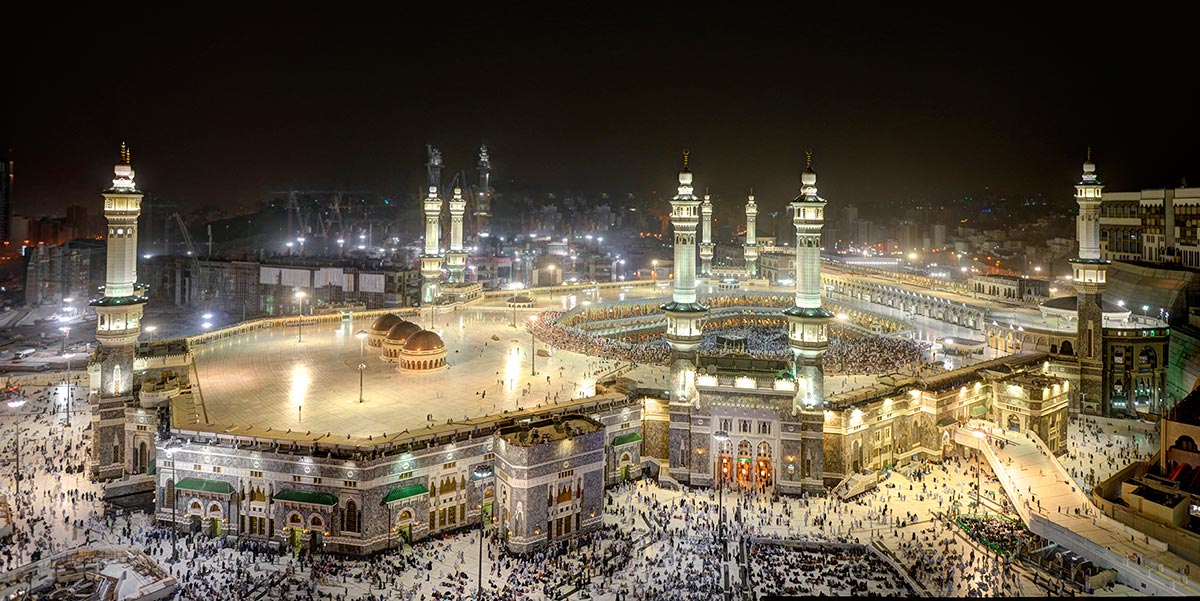For Muslims, the pilgrimage of Hajj is one of the most significant acts of worship, while Umrah, though voluntary, is also deeply cherished. Both pilgrimages involve a series of spiritual and physical rituals designed to bring a person closer to Allah. If you are a first-time pilgrim, understanding these rituals and their meaning can help make the journey smoother and more spiritually fulfilling. In this guide, we will provide a step-by-step breakdown of the rituals for both Hajj and Umrah to help first-time pilgrims understand what to expect.
Rituals of Hajj: A Detailed Step-by-Step Guide
Hajj is performed during specific days in the Islamic month of Dhu al-Hijjah and involves a series of rituals that take place in and around Mecca, Saudi Arabia. Here is a step-by-step breakdown:
- Ihram (State of Purity): Before arriving in Mecca, pilgrims enter a state of spiritual purity called Ihram. This involves donning special white clothing: men wear two simple white cloths, while women wear modest attire that covers the body. The intention is to purify oneself both physically and spiritually. During Ihram, pilgrims must avoid certain activities, including arguing, fighting, and engaging in marital relations. The pilgrim recites the Talbiyah prayer: “Here I am, O Allah, at Your service.”
- Arrival in Mecca: Upon arrival in Mecca, pilgrims head directly to the Masjid al-Haram to perform the first major ritual: Tawaf. This involves circumambulating the Kaaba, the most sacred structure in Islam, seven times in a counter-clockwise direction. Pilgrims should make du’a (supplication) during the Tawaf, asking for forgiveness and guidance.
- Sa’i (Walking Between Safa and Marwah): After completing Tawaf, pilgrims perform Sa’i, which is walking seven times between the hills of Safa and Marwah. This ritual commemorates the actions of Hagar, the wife of Prophet Ibrahim, as she searched for water for her son Ismail. The journey symbolizes perseverance and trust in Allah’s mercy.
- Mina: The Tent City: On the 8th of Dhu al-Hijjah, pilgrims travel to Mina, a vast plain outside of Mecca, where they spend the night in tents. Pilgrims prepare for the next day’s important ritual: the Stoning of the Devil.
- Arafat: The Day of Standing: The 9th of Dhu al-Hijjah is spent at Arafat, the most spiritually significant day of Hajj. Pilgrims stand in prayer and supplication, seeking forgiveness from Allah. This is a day of deep reflection and repentance, and it marks the climax of Hajj. Pilgrims also spend time in the nearby Plain of Arafat, where the Prophet Muhammad delivered his final sermon.
- Muzdalifah: The Night of Prayer: After leaving Arafat, pilgrims proceed to Muzdalifah where they collect pebbles for the next ritual. They spend the night under the open sky, praying and reflecting on their pilgrimage. The simplicity of Muzdalifah is meant to remind pilgrims of the equality of all Muslims before Allah.
- Stoning of the Devil (Ramy al-Jamarat): On the 10th of Dhu al-Hijjah, pilgrims return to Mina and perform the Stoning of the Devil by throwing seven pebbles at three pillars. This act symbolizes the rejection of evil, remembering Prophet Ibrahim’s rejection of Satan’s temptation.
- Sacrifice and Eid al-Adha: After stoning the pillars, pilgrims sacrifice an animal, typically a sheep, goat, or cow, as a commemoration of Prophet Ibrahim’s willingness to sacrifice his son for Allah. This ritual coincides with the celebration of Eid al-Adha. The meat is distributed to the poor, and pilgrims may also partake in it.
- Tawaf al-Ifadah: After completing the rituals of Mina, pilgrims return to Mecca to perform another Tawaf called Tawaf al-Ifadah, which is a symbol of a pilgrim’s renewed closeness to Allah after completing the rites of Hajj.
- Shaving or Trimming the Hair: After performing Tawaf al-Ifadah, men shave their heads or trim their hair, while women cut a small portion of their hair. This act symbolizes spiritual rebirth and purification.
- Final Tawaf (Tawaf al-Wada): Before leaving Mecca, pilgrims perform a final Tawaf, known as Tawaf al-Wada, which is a farewell visit to the Kaaba. It is a way of showing respect and gratitude for the opportunity to perform the pilgrimage.
Rituals of Umrah: A Step-by-Step Guide
Umrah, though not obligatory, holds significant spiritual value. It involves fewer rituals compared to Hajj and can be performed at any time of the year. The rituals of Umrah are:
- Ihram: Like Hajj, pilgrims begin their Umrah by entering the state of Ihram. After making the intention to perform Umrah, pilgrims don their special garments and recite the Talbiyah.
- Tawaf: The first ritual of Umrah is to perform Tawaf around the Kaaba. This is done seven times, and it is a time for personal supplication and seeking Allah’s mercy.
- Sa’i: After Tawaf, pilgrims perform Sa’i, walking seven times between the hills of Safa and Marwah. This is a reminder of Hagar’s search for water for her son Ismail.
- Tahallul (Shaving or Trimming the Hair): After completing Sa’i, men shave their heads or trim their hair, while women cut a small portion of their hair. This symbolizes purification and spiritual renewal.
Conclusion
The rituals of Hajj and Umrah are more than just physical acts—they are deeply spiritual, intended to bring pilgrims closer to Allah and allow them to reflect on their own lives. As a first-time pilgrim, understanding these rituals will help you prepare mentally and spiritually for the pilgrimage. Whether you are performing Hajj or Umrah, the experience is meant to purify the soul, deepen faith, and create lasting spiritual transformation.

